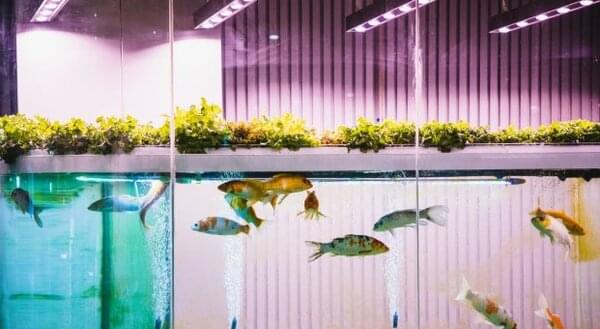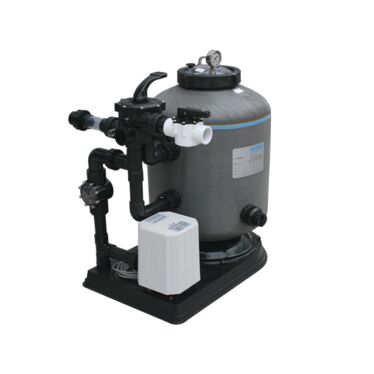
What Is Aquaponics?
Aquaponics is a food production technique that blends aquaculture (growing fish and other aquatic animals). It involves the growth of plants in gravel, sand, or water without soil.
Aquaponics uses this combination to facilitate a sustainable food production system, creating little to no waste in the ecosystem.
The plants are fed by the discharge or waste of the aquatic animals, while, in exchange, the vegetables clean up toxins in the water, making the environment habitable for the fish.
Aquaponics is made up primarily of a fish tank, a media bed, fish, plants, and medium water.
This cycle makes the tank safe for both fish and plants. Food production using this symbiotic method is as organic as traditional methods.
It is suitable when there is a need to reduce waste output into the environment, as the discharge from aquatic animals is utilized as a nutrient by plants.
Hydroponics is also ideal for areas with poor soil quality, as the soil is not essential for the growth of plants. In other words, it is a suitable way to grow your fish and plants together.
Aquaponics is a great means of organic and sustainable food, water, and aquaculture production for an ecosystem.
What Is the Nitrogen Cycle in Aquaponics?
Before you start an aquaponics system, you must understand that the nitrogen cycle is vital in its setup. Nitrogen is an essential element in an aquaponics system because it is necessary for the survival of aquatic animals and plants.
The nitrogen cycle in aquaponics begins when fish feed is introduced. Fish feed is rich in protein, which is a polymer of amino acids. Amino acids are made up of nitrogen. This implies that when nitrogen is introduced into an aquaponics system, it is in the form of a protein.
The Nitrogen Cycle
When the fish eat the feed, the microbes in their digestive system break down the proteins into amino acids and then ammonia. The ammonia exists in two forms: un-ionized ammonia (NH3), a dissolved gas, and ionized ammonium, a dissolved ion.
Ammonia is toxic to fish because it has no charge. Its build-up crosses the cell membranes of the fish, causing stress, internal organ damage, and eventually death. Because ammonium is a weak acid and a dissolved ion cannot cross the cell membranes of the fish, this makes it less toxic.
Depending on the pH level of the water, ammonium can be converted into ammonia, which can be toxic. Once ammonia is in the water, it must be removed for the survival of the living organisms. This is done through a process known as nitrification.
Nitrification
Nitrification is an essential process in which aquaponics thrives. Basically, nitrification converts ammonia and ammonium into useful nitrate. Ammonia is turned into nitrite and then into nitrate.
First, ammonia-oxidizing bacteria transform ammonia into nitrite. This by-product is still toxic like ammonia and should not be allowed to stay in the aquaponics system.
Nitrite-oxidizing bacteria (NOB) is introduced to oxidize the nitrite further and thereby generate a non-toxic nitrogen-containing compound, nitrate, that plants can use to build their cells.
The bacterium mostly used in accomplishing this detoxification process is called Nitrobacter. However, many other bacteria can be used to accomplish this chemical reaction.
The pH of the aquaponics system must be adjusted periodically because the presence of nitrogen and its subsequent increase will lower the pH values.

All in All
Aquaponics is an efficient and environment conservation-driven mechanism to achieve sustainable food, plant, and water production. Waterco’s Aquabiome is designed for ponds and water gardens. It offers mechanical and biological filtration in a single housing and can support dense populations of nitrifying bacteria.
The main features of Waterco’s Aquabiome include:
- Highly durable
- Effective nitrification and mechanical filtration
- Air-assisted hydraulic backwash to save time and water
- Fibreglass filters
All in all, it provides an efficient water filter system for aquaponics to ensure that you grow sufficient plants and aquatic animals while making little input. Waterco’s Aquabiome is a good investment for every aquaponics owner in Malaysia.